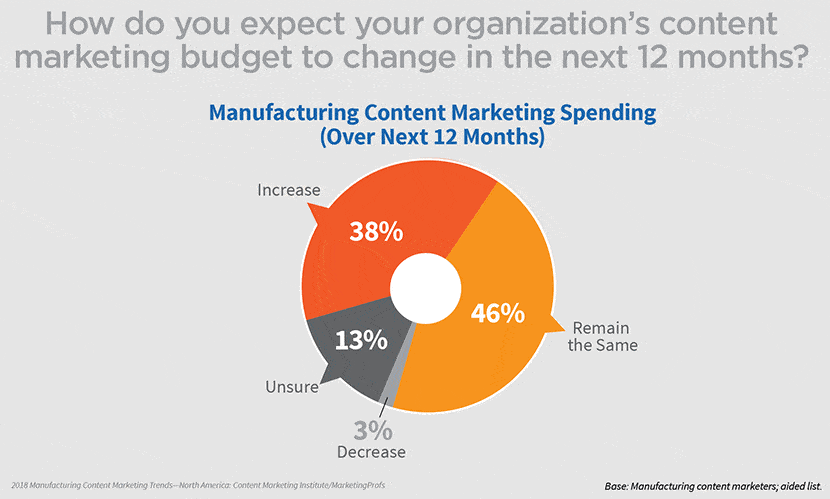
What is a "digital marketer"? This term encompasses a range of functions and marketing areas. This article discusses social media, mobile marketing, and email. Managers of projects will also benefit from the definition of a "digital marketer". Start by creating a Gantt diagram or process map that describes the entire digital marketing project. This planning process should include all stakeholders and management leads. You might need to create different versions for different input types.
Content marketing
According to a digital marketer, content marketing can include many strategies that a business can employ to attract leads and build a case in favor of a product or service. The process can be made easier by having the right content at all stages of the sales cycle. Here are some common content-marketing strategies:
Social media marketing

The digital marketer definition includes several important elements. One of them is monitoring. Social media marketers monitor conversations to determine if a brand has been mentioned. They also analyze social media analytics results, such as reach or engagement. These professionals aid business owners in selecting the best social media channels that meet their needs. Social media marketing gives companies the opportunity to connect with their target audience and gather feedback. They can also monitor their relationships with them. The job of a digital marketer is wide-ranging.
Email marketing
The practice of sending commercial messages via an electronic mailing system is called email marketing. Email can be any type of content, sent to one person or a group. Emails should be relevant, personal, and sent with a reasonable frequency. Despite these challenges, many marketers believe email to be the most efficient marketing channel. Below is an email marketing definition by a digital marketer. Below are some of its advantages and disadvantages.
Mobile marketing
It involves reaching out to the target audience through their mobile phones or tablets. Using various tools such as social media, mobile applications and text messages, marketers are able to reach consumers in a variety of locations and with tailored offers. Not just advertising messages, but a seamless experience is the goal. Video content is an important part of a successful mobile marketing campaign. It is important to keep in mind that videos are preferred by almost 48% customers when searching for services and products.
Marketing Permission

Permission marketing is a marketing method where you ask a consumer's permission before sending them a marketing message. This method of marketing is regarded as a way to achieve success in marketing. Your business' credibility and brand image can be enhanced by getting consent from consumers to receive marketing messages. Targeting only those people who are interested in your product/service will save you money. Permission marketing saves money and builds a positive brand image.
Inbound marketing
The definition of Inbound Marketing by digital marketers is a framework that emphasizes three steps: generating and educating customers, and then promoting your brand. Potential customers research and educate themselves before making a purchasing decision. These three steps are key to the success of a marketing strategy. To achieve this, you should use multiple channels to promote your brand. Inbound marketing can be done through a variety of channels, including a website, blog, and video campaign.
FAQ
Content marketing: Where do I begin?
Your audience is the first step. Who are they? What are their needs? What are their needs? Once you know who you're writing for, you can determine where to focus your efforts.
What is a Content Strategist?
A content strategist assists brands in telling stories by crafting compelling messages that connect with their audiences emotionally. They are storytellers who focus on telling brand stories that help people make decisions and take action.
Content strategists have the ability to develop strategies that attract current and future customers. They use data analytics and storytelling to create experiences that are inspiring customers to go to stores, buy products, and share their excitement online.
They also know how social media platforms can be integrated into campaigns. They are also skilled in using technology tools such video and virtual reality to provide powerful customer experiences.
Digital content is not only created by content strategists, but they also translate these ideas into actionable plans that marketers must execute. This includes creating content and briefings for creative purposes, budget management, and the creation of content for television and print.
Do I need an SEO expert to do Content Marketing? Yes!
SEO professionals understand how search engines such as Google rank pages. They can also identify the keywords you should target when optimizing pages.
What is Content Marketing Strategy?
Content Marketing Strategy provides you with access to data you don't normally have. This data allows for you to evaluate which types of content are performing better than others.
It allows you to identify the most effective strategies to drive more visitors to your site. It can also give you insights into the behaviour of your audience, so that you can produce even better content.
This means you can spend less time worrying about what kind of content works and more time focusing on what doesn't.
The Content Marketing Strategy helps you identify the messages that resonate with your audience.
By analyzing these messages, you can figure out what content they prefer. This will allow you to create similar pieces of content, and help keep your ideas alive.
A Content Marketing Strategy allows you to track the performance and effectiveness of your content. You can quickly see which types of content converts best by sharing them more.
A Content Marketing Strategy is essential to ensure your content performs according to its intended purpose.
What are the 7 Steps of Content Marketing?
The content marketing process is seven steps long
-
Identify the problem
-
Learn what is working right now
-
New ideas are possible
-
Turn them into strategies
-
They are worth a try
-
Get the best results
-
Keep going with the same process until something works.
This approach has been proven to work well for businesses large and small.
Statistics
- According to our research, 65% of companies with very successful content marketing in 2021 ran content audits at least twice a year. (semrush.com)
- According to our research, brand awareness, attracting traffic, and generating leads remain the key content marketing goals in 2022. (semrush.com)
- Out of the 1,500 marketers we surveyed for our State of Content Marketing report, 78% who felt their content marketing strategy was exceptionally effective in 2021 had documented their strategy. (semrush.com)
- An example of an overarching goal could be: "In 2022, we want to achieve a 20% increase in revenue created by organic content and generate 15,000 MQLs with a budget of $30,000." (semrush.com)
- Companies that use content marketing see approximately 30% higher growth rates than businesses not using it. (mailchimp.com)
- Forty-seven percent of buyers view 3 to 5 pieces of content before engaging with a sales representative. (mailchimp.com)
- According to research compiled by Coschedule: Companies that publish 16+ blog posts a month get as much as 3.5x as much traffic as those that publish 0-4 posts a month. (criteo.com)
- According to the Content Marketing Institute, 70% of B2B marketers and 86% of B2C marketers surveyed use content marketing in some form or other. (criteo.com)
External Links
How To
How to create stunning images
Images can help you make your content standout among the rest. Images are one of most effective methods of communicating ideas visually. They are excellent at grabbing attention, and increasing engagement. They are great for communicating complex concepts clearly and effectively. ).
Images are a great way to bring life and energy into a piece of writing. But if you don't know how to choose the right image for the job, you could have something less than striking results. This article will give you some ideas on choosing the right images for your next project.
-
What makes an image great? When choosing which photos to use, there are many things that you need to remember before you even start looking at them. First, it is important to choose images that have a clear and concise message. A cluttered image won't cut it. It won't attract attention the same way a clear, concise photo would. Avoid images that have people not smiling or staring directly into the camera. This can make it appear that you don't care about what you say. Last but not least, ensure the image doesn’t distract from your main message. If it distracts from the main point, it may not be ideal.
-
Look for inspiration. Once you've got a list of potential candidates, it's time to go through them and find those that catch your eye. You should first look at their captions. You may see captions in both the photo and the text. Either way, you want to see whether the caption is interesting enough to read. Pay attention to the context. Do you expect to see someone having a good time in the photo? Maybe it looks too dangerous. Maybe it's somewhere you wouldn't normally associate with happiness. No matter what the reason, consider why you like this image and how it connects to the message you are trying to convey.
-
You can test different types of images. The best thing about using images in your content? They allow you to highlight certain parts of your text. If you are writing about a product, an image showing the item in action might be helpful. An image that shows the data in your infographic may also be helpful. Visual aids like these will draw people closer to your information and make them feel more connected to the content.
-
Choose the right file format. You must remember which file format you should use when choosing images. JPEG and GIF are the two most common file formats when designing web pages. Both are great file formats, but each has its pros and cons. JPEG files work well with all media, even websites and social media posts. They are particularly useful for photos as they allow you to store large files in a very small area. GIFs can become blurred over time due to their loss of quality. GIFs are smaller and more suitable for animation and graphics than JPEGs. They do not support transparency so they are unsuitable as photos.
-
Use other visuals. You might consider adding other visuals to your content. This can help you make your post more effective by creating a distraction-free atmosphere for your readers. This will make it less likely that they leave your article page and go elsewhere. You can create infographics on your website to add more visuals. Infographics are very popular because they make it easy to share lots and lots of useful information. These infographics are great for adding to blog posts.